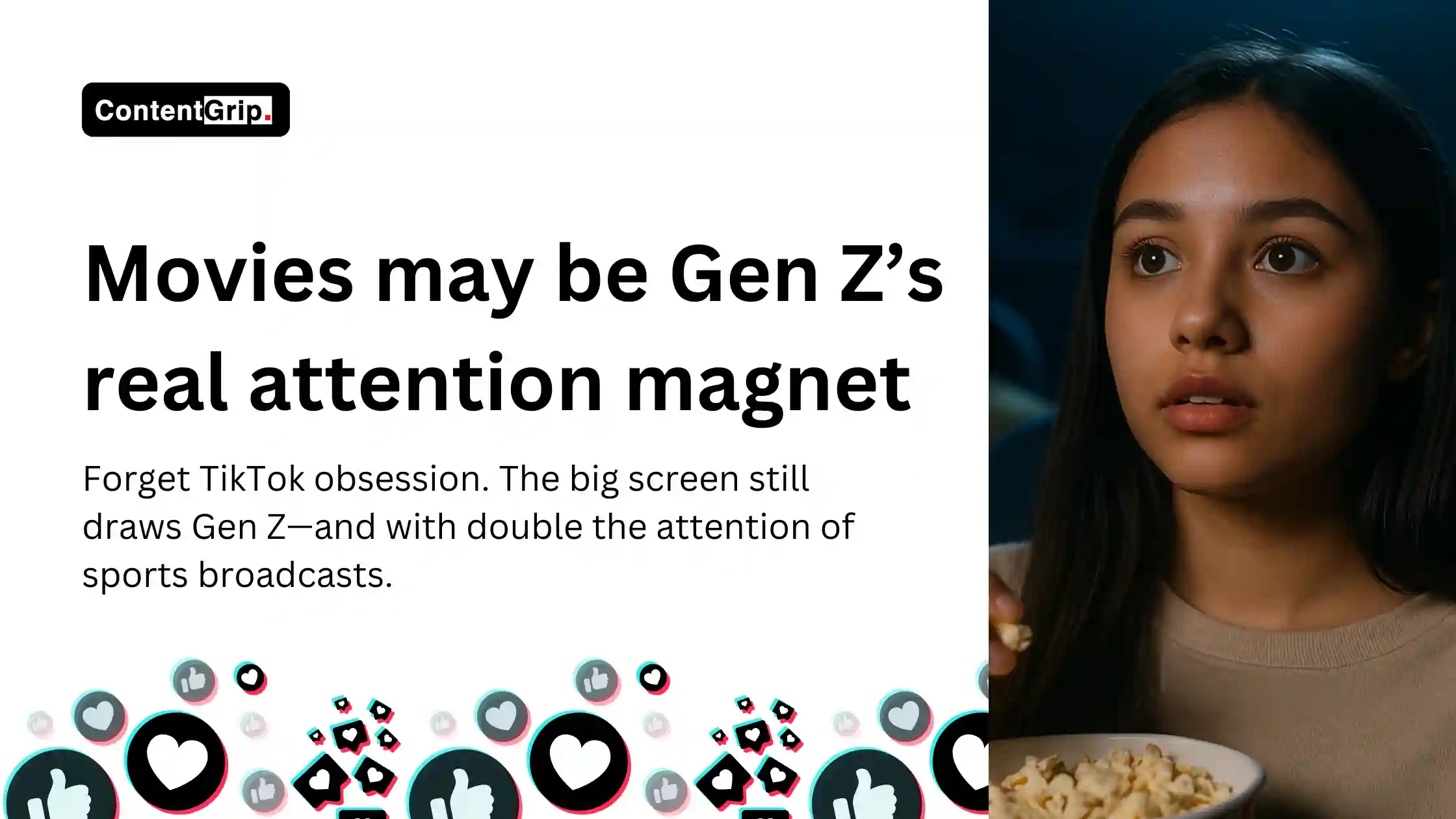Forget TikTok, movies may be Gen Z's real attention magnet
Theatrical releases are quietly outperforming YouTube, sports, and TV among younger audiences.

For years, marketers have chased “the unreachables”—those elusive Gen Z consumers who dodge traditional TV and ignore online ads. TikTok quickly became the go-to answer, a flashy platform promising reach among 18–34-year-olds in ways linear channels couldn’t deliver.
But what if that singular focus on short-form vertical video is blinding us to a better opportunity?
This article explores the surprising data behind Gen Z’s media habits—and why movie theaters might be your smartest play in 2025’s Upfront season.
Spoiler alert: Gen Z isn’t as attention-deficient as the headlines claim. They just demand more from their entertainment—and movies deliver.
Short on time?
Here’s a table of contents for quick access:
- The TikTok tunnel vision trap
- Where Gen Z is really watching—and paying attention
- Why movie audiences matter now
- What marketers should know

The TikTok tunnel vision trap
TikTok has dominated conversations around Gen Z marketing for good reason. It’s fast, addictive, and culturally influential.
But brands leaning too hard on the app may be missing the bigger picture—and undervaluing other platforms where younger audiences are not just present but attentive.
While TikTok excels at short bursts of content, it also fragments attention. Ads are skippable, often ignored, and drowned out by an endless scroll.
Meanwhile, TV viewership among Gen Z continues to drop, and YouTube—though still relevant—offers limited uninterrupted attention spans.
Where Gen Z is really watching and paying attention
Here’s the twist: according to research from the National Research Group and data from National CineMedia (NCM), movie theaters are quietly winning over Gen Z.
In fact, 90% of Gen Zers go to the movies regularly, outpacing millennials and dramatically outperforming traditional and streaming platforms in audience age and engagement.
Even the oldest-skewing theatrical releases are pulling younger audiences than the NFL. In 2024, theaters hosted 18 opening weekends where 18–34-year-olds matched or outpaced major live sports broadcasts.
Why movie audiences matter now
This is not just about foot traffic—it’s about focus. In the age of second screens, the theater offers marketers a rare gift: undivided attention.
Nielsen data suggests that attention levels at the movies are over 2X higher than sports broadcasts on TV.
Add in the cultural phenomena of “Barbenheimer,” Gen Z cosplay trends at screenings, and a 40% increase in theatrical releases projected for 2025—including major franchises like Superman, Mission Impossible, Jurassic Park, and Fantastic Four—and the stage is set. Between Labor Day and New Year’s Eve 2025, theaters are expected to draw over 250 million 18–34-year-old consumers.
These aren’t passive views. These are appointment moments, often in groups, where consumers are already primed to spend. It’s mass attention at scale—something no TikTok trend can guarantee.
What marketers should know
Here’s how to rethink your strategy in time for the Upfronts:
1. Treat movie theaters as premium inventory
Forget the idea that theaters are niche or old-school. Gen Z treats moviegoing as an event. These environments offer brand-safe, immersive ad experiences with no skip button and zero distractions.
2. Time campaigns with franchise weekends
Leverage major releases—especially during blockbuster windows. These are peak attention moments where ads can ride the cultural wave.
3. Balance your media mix
Diversify. Don’t abandon social media—but recognize that not all reach is created equal. Platforms like TikTok may deliver impressions, but theaters deliver attention. Your budget should reflect that nuance.
4. Capture cultural momentum
Theater audiences don’t just watch—they participate. From dressing up to online fandoms, movie releases create multi-channel buzz. Smart marketers will extend their campaigns beyond the screen into social and experiential activations.
If your goal is to reach Gen Z in meaningful, undistracted ways, stop thinking like a TV buyer or a TikTok chaser.
Think like a storyteller—and consider the theater your biggest stage.
As the ad industry fights for attention in an oversaturated digital world, the silver screen might just be your sharpest edge.




